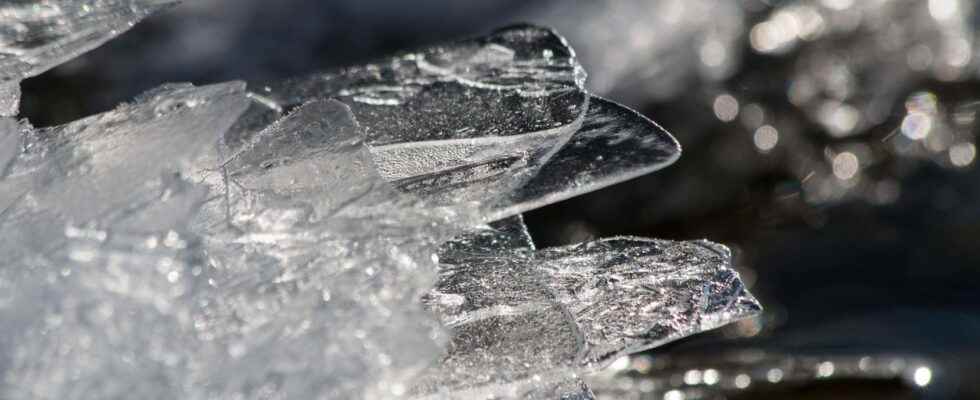The pipes burst by a blow of frost remind us every winter: ice occupies a greater volume than liquid water! An astonishing peculiarity which can be explained at the atomic level.
You will also be interested
In the vast majority of cases, the state solid of a body, where the molecules are more orderly, occupies less space than the state liquid. For water, it is the other way around.
A dilatometric anomaly
The physicists call it a ” anomaly dilatometric ”. Some rare compounds also present this anomaly:
- the’antimony ;
- the bismuth ;
- gallium;
- the germanium ;
- plutonium;
- the silicon.
The Volumic mass of ice is 0.91 g / cm3 while that of liquid water is 1 g / cm3. This drop in Volumic mass explains in particular that ice floats on water.
The ice takes up more space: the fault of the hydrogen bonds
The dilatometric anomaly is explained by the particular structure of the water molecule H2O, consisting of two hydrogen atoms bonded to one atom ofoxygen. Indeed, the oxygen atom is negatively charged and the hydrogen atoms positively. The water molecule is therefore a polarized molecule.
This strong polarity makes it possible to create bonds, called ” hydrogen bonds ”, Between the oxygen atom and the hydrogen atom of a neighboring molecule. In ice, the water molecules held by hydrogen bonds are arranged in a network of hexagons which leaves a lot of vacuum: ice therefore takes up more space than liquid.
Hydrogen bonds are also found in liquid water, but in a less stable manner. Moreover, this gives the water a temperature of vaporization high (about 100 ° C) for such a small molecule (for comparison the H2S vaporizes at -60 ° C for example), and this is the reason why liquid water exists on Earth at room temperature, and therefore that life has been able to develop!
Interested in what you just read?
.
fs4
